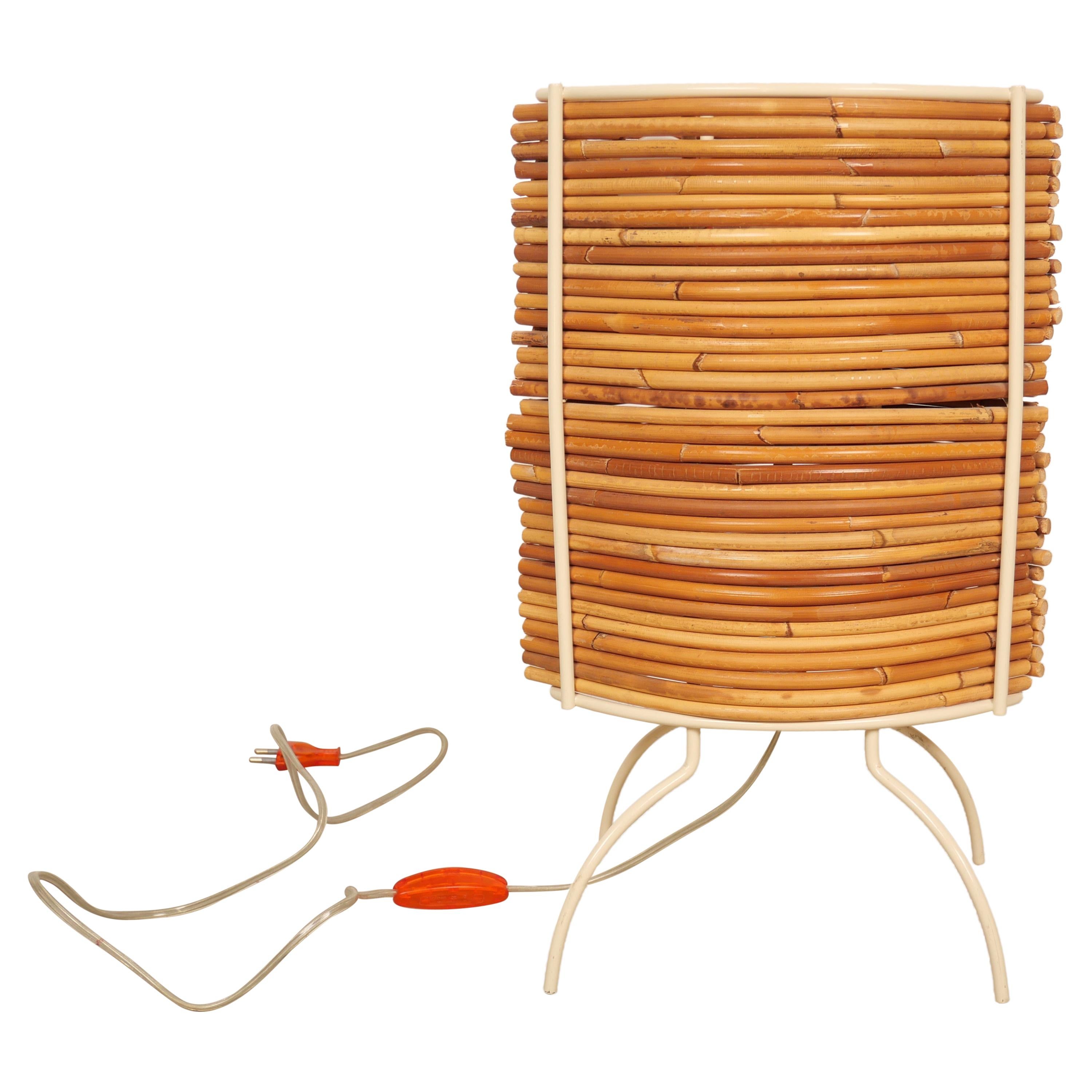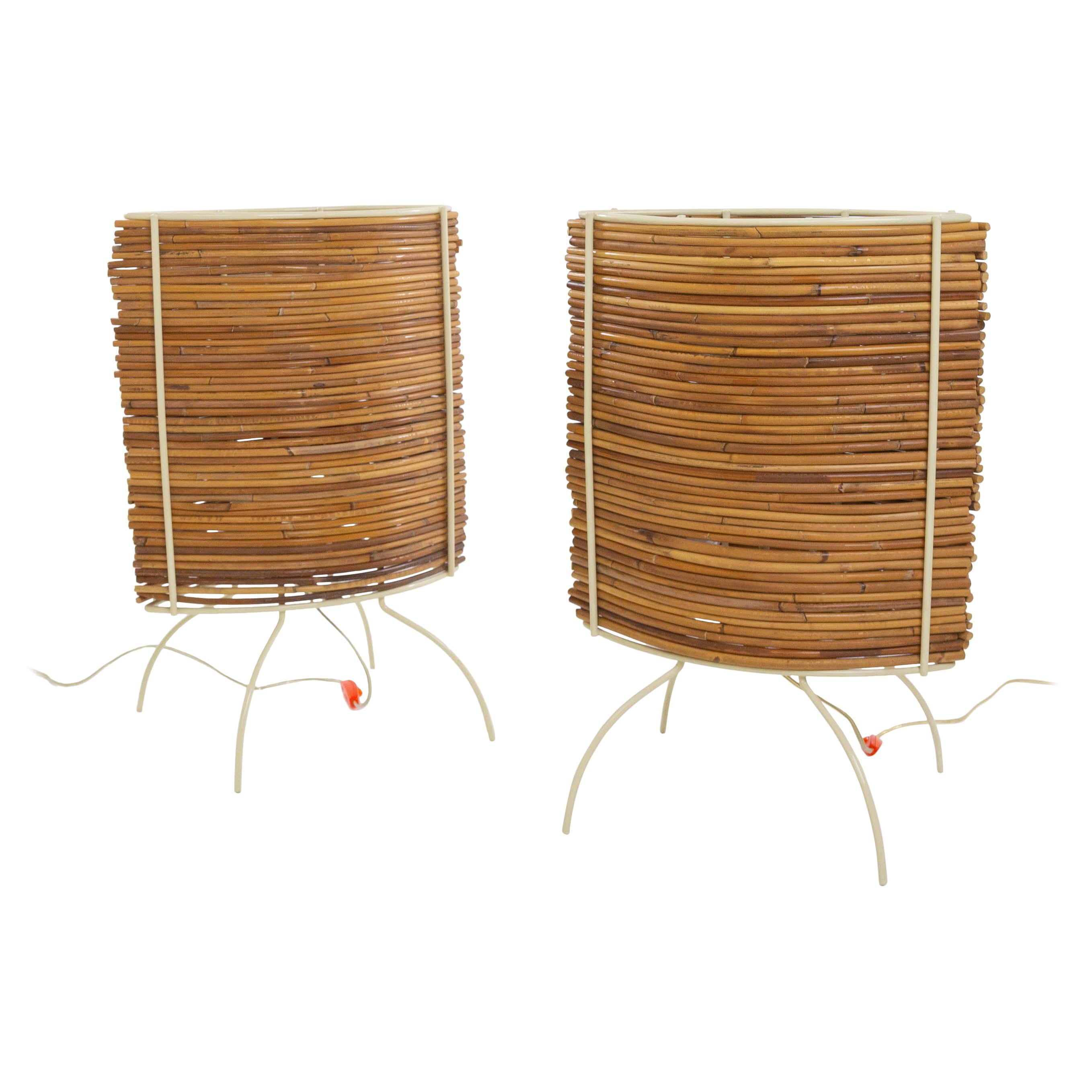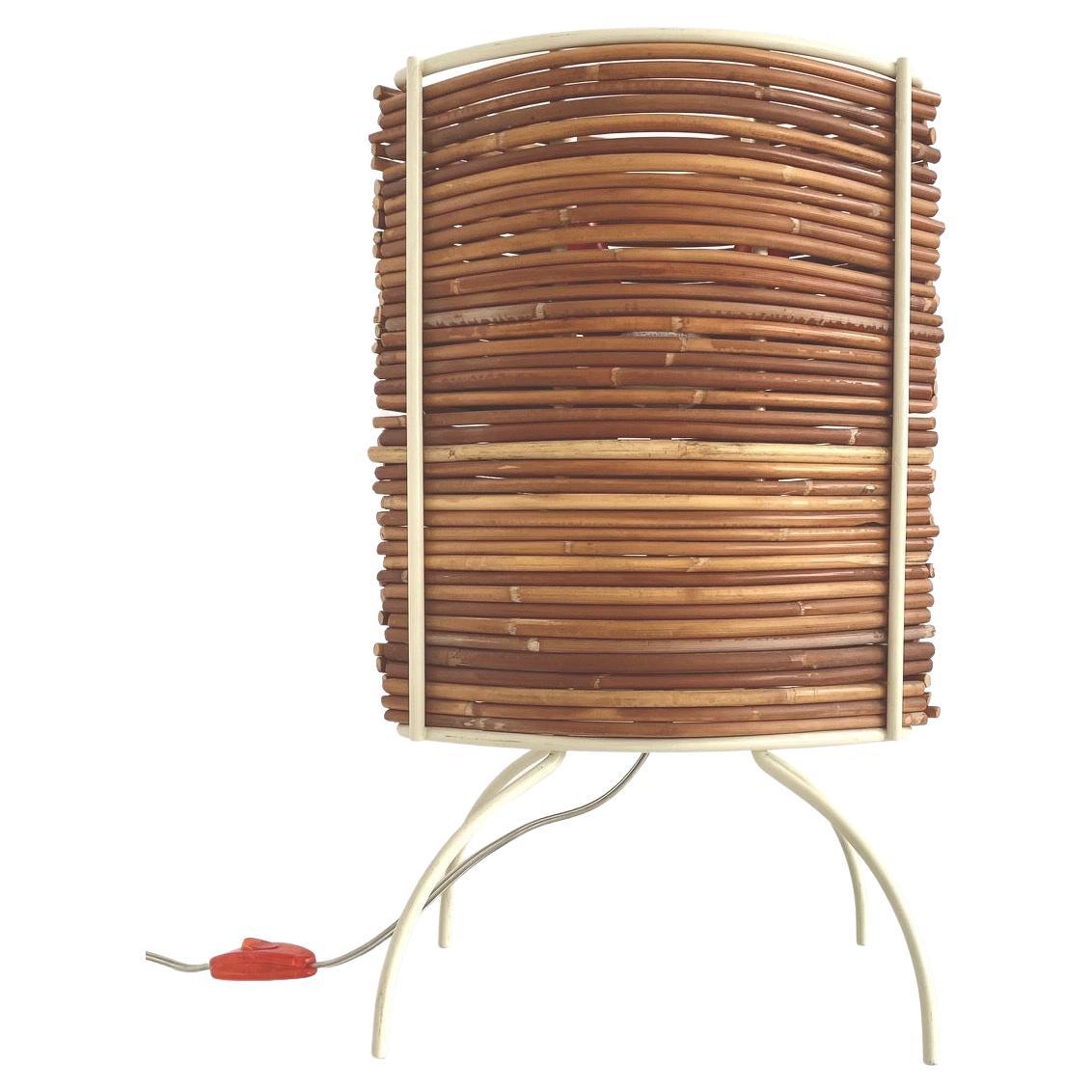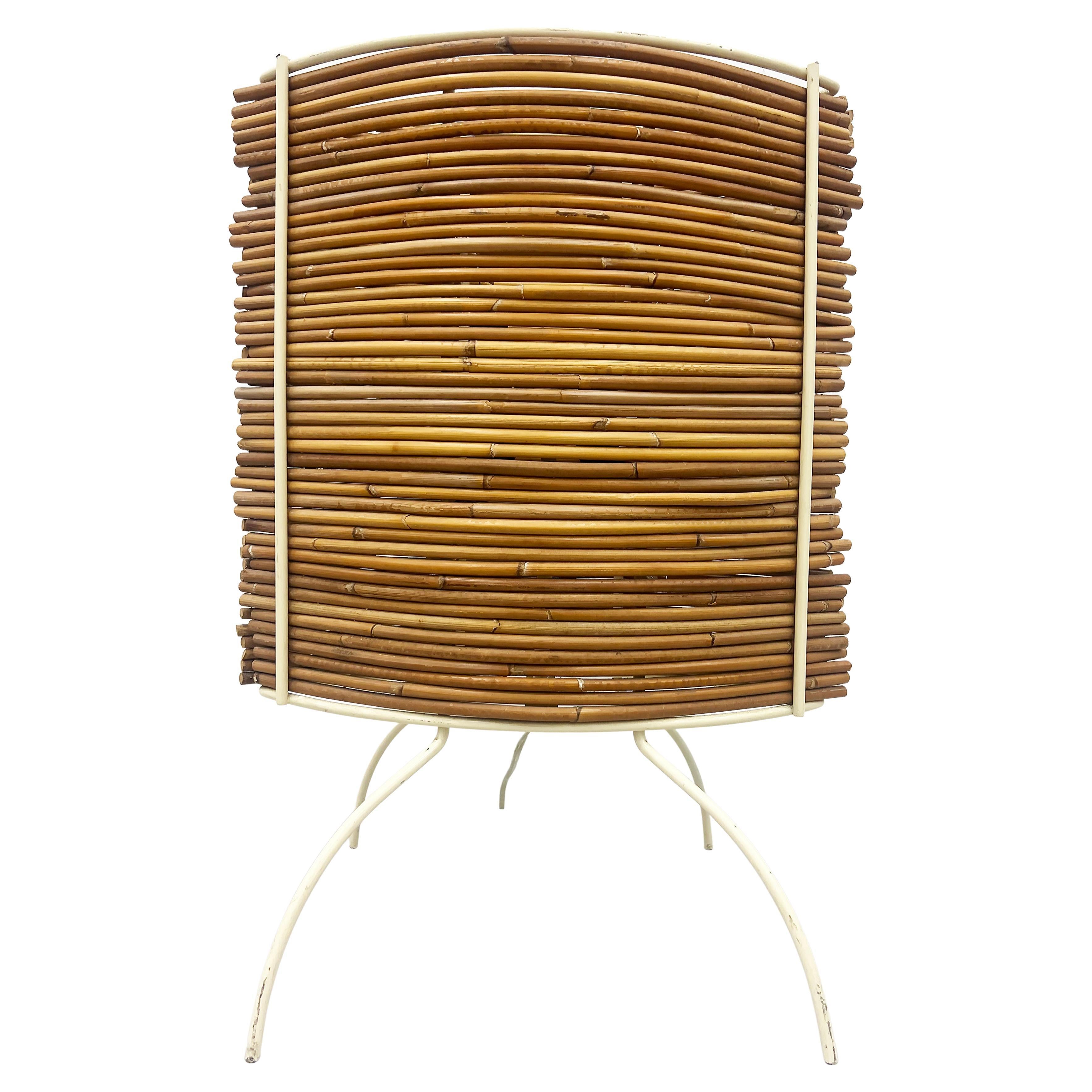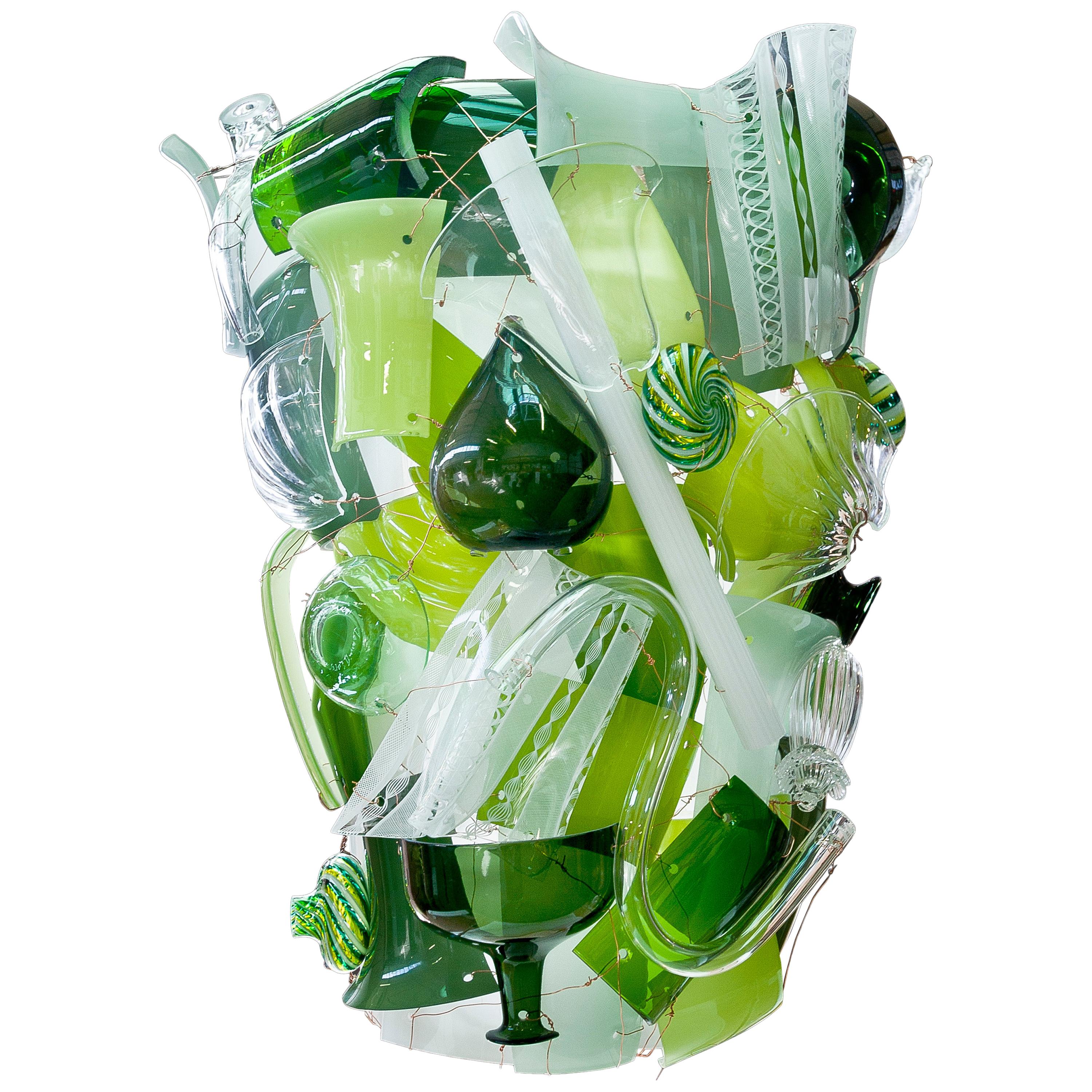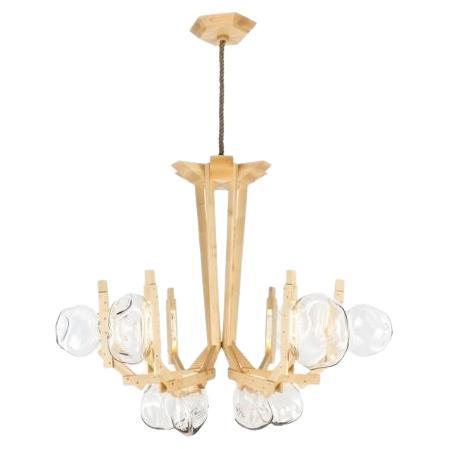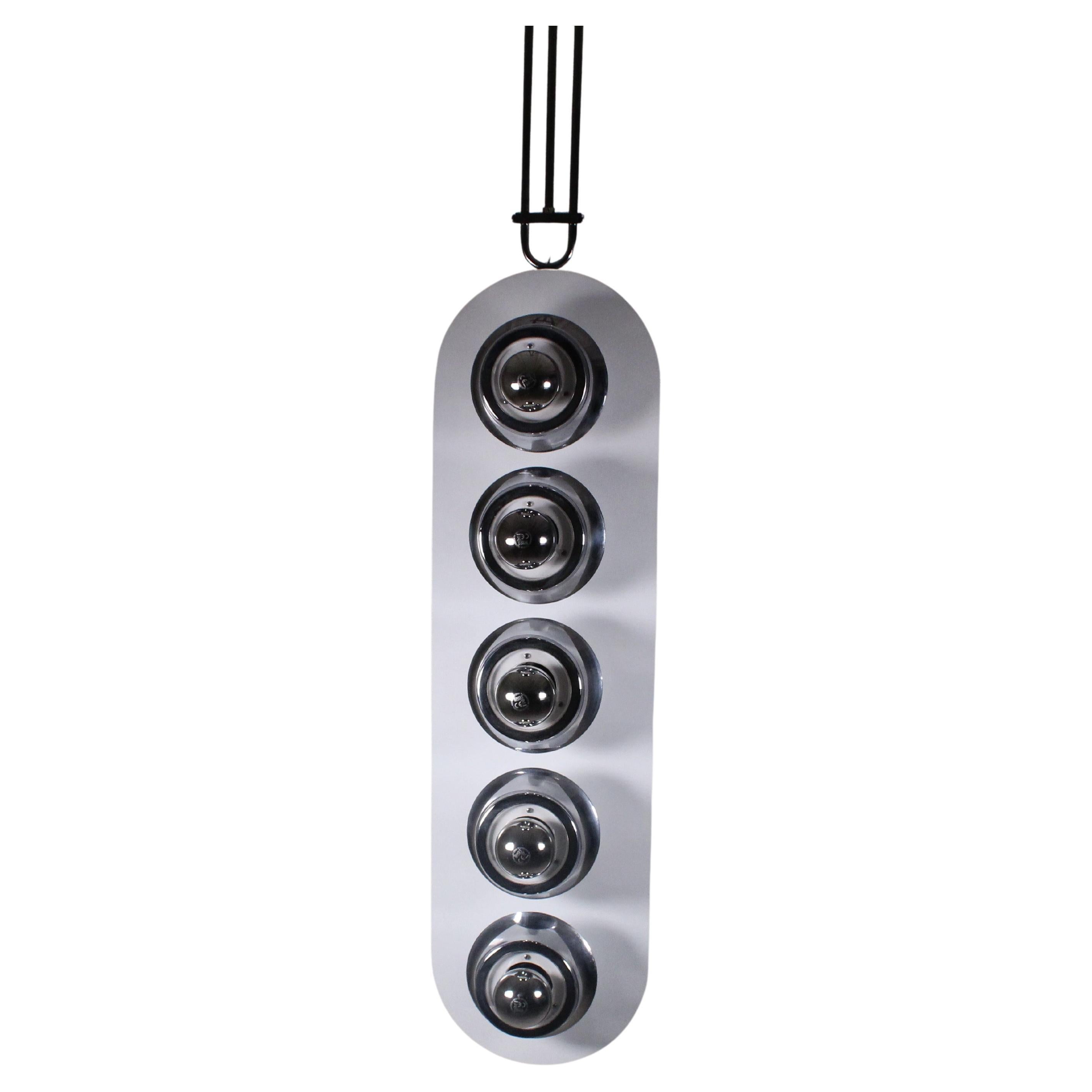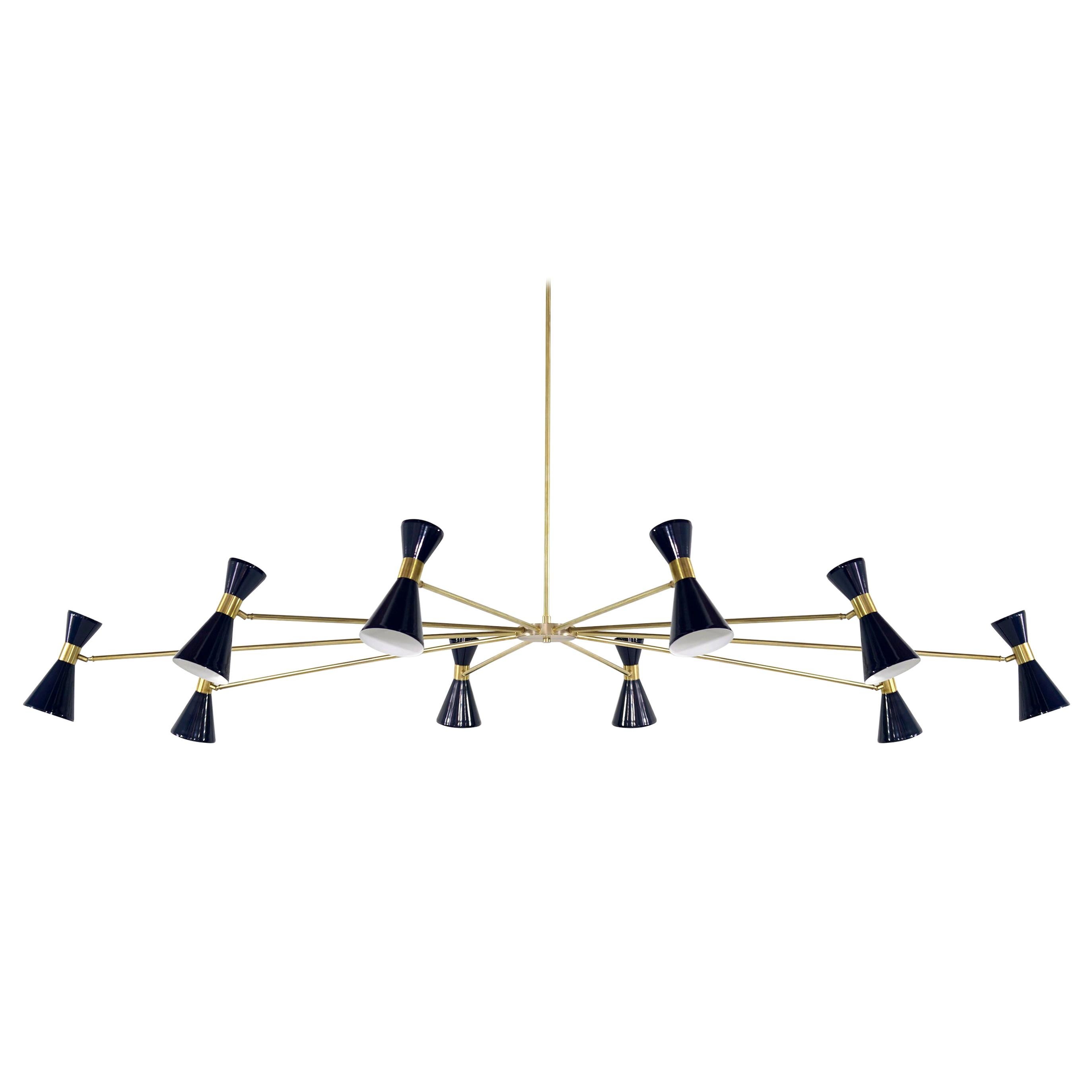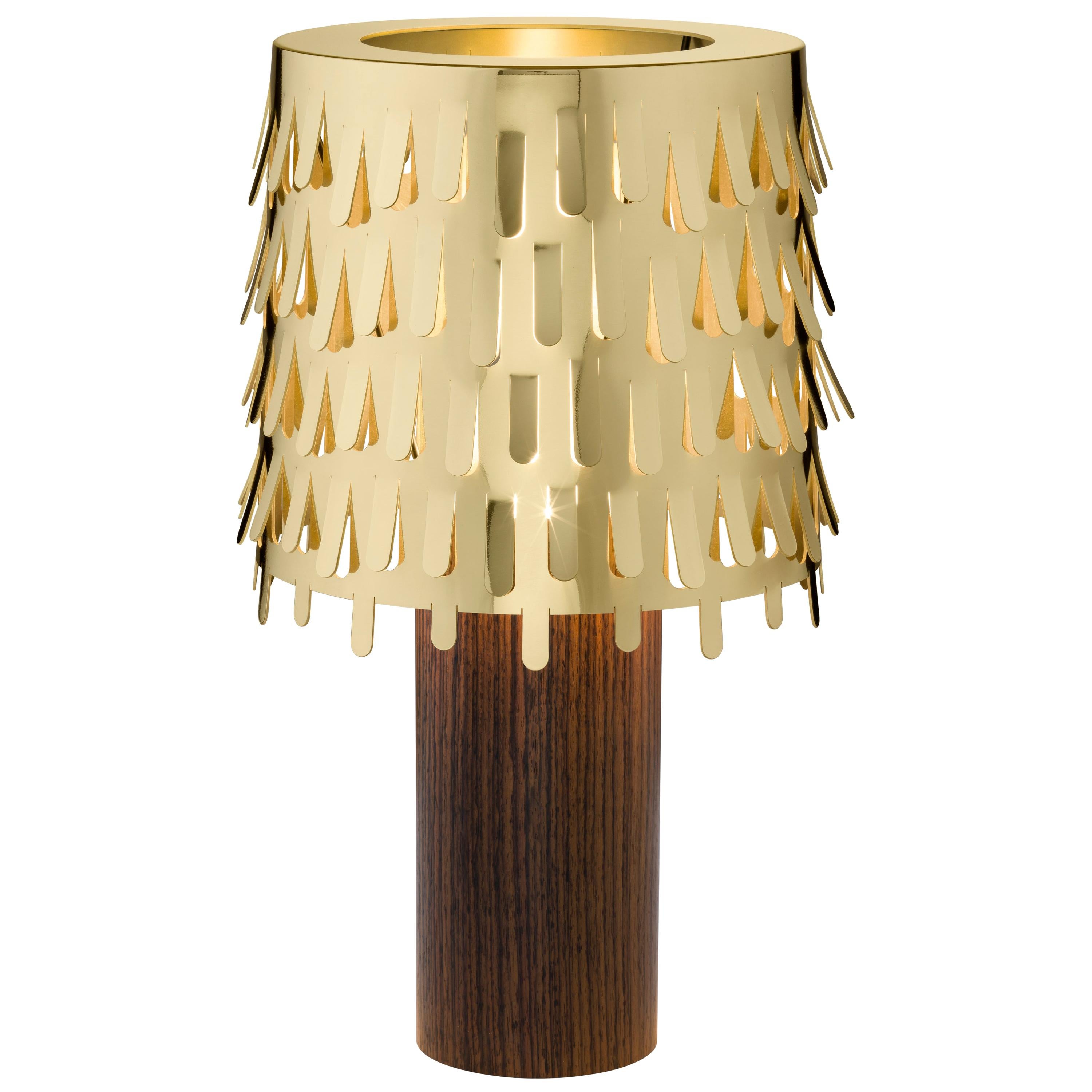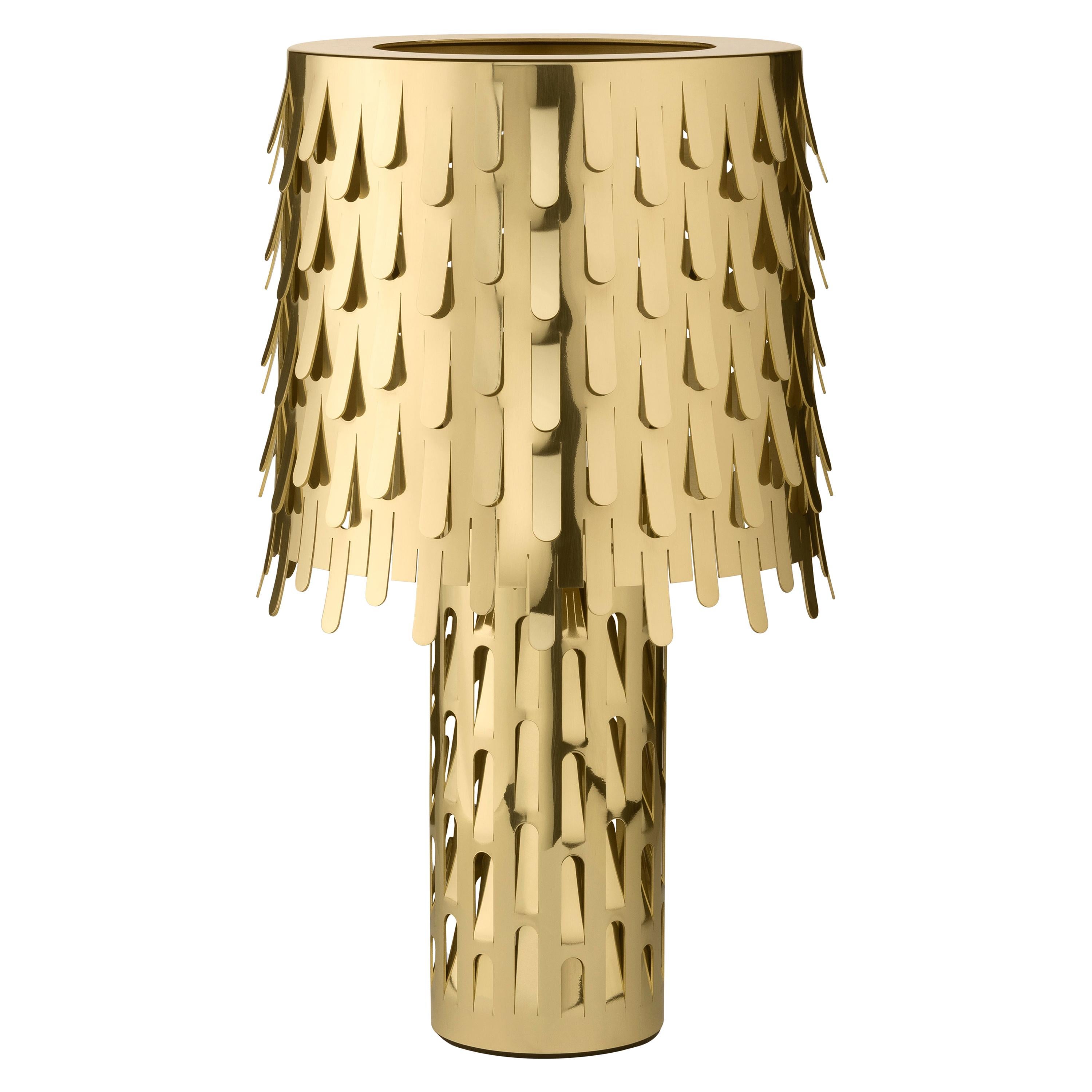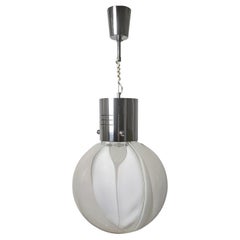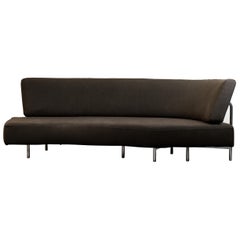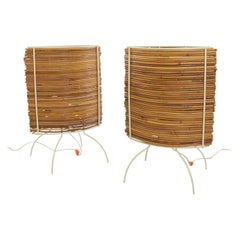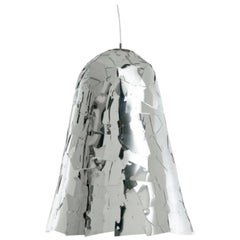
Campana Lamp by Humberto and Fernando Campana Edra Production
View Similar Items
Campana Lamp by Humberto and Fernando Campana Edra Production
About the Item
- Creator:Campana Brothers (Designer)
- Dimensions:Height: 35.44 in (90 cm)Diameter: 27.56 in (70 cm)
- Style:Industrial (Of the Period)
- Materials and Techniques:Aluminum,Anodized
- Place of Origin:
- Period:
- Date of Manufacture:2010
- Condition:Reupholstered.
- Seller Location:Montecatini Terme, IT
- Reference Number:1stDibs: LU5304219350331
Campana Brothers
The Campana Brothers were among Brazil’s foremost contemporary furniture designers. Inspired by their country’s vernacular culture, Humberto and Fernando Campana (b. 1953; 1961–2022) combined everyday objects in unexpected ways — often waste materials like rope, cardboard, plastic tubing, and aluminum wire — to make their singular chairs, decor, lighting and other items. Their designs have been manufactured by such companies as Alessi, Swarovski and Cappellini. And they received numerous honors, including being named Designer of the Year both at Design Miami in 2008, and by Maison & Objet in Paris in 2012.
Humberto Campana was born in Rio Claro in 1953 and earned a bachelor’s degree in law from the University of São Paulo. Fernando was born in 1961 in Brotas, and graduated from the São Paulo School of Fine Arts with a bachelor’s degree in architecture.
The Campana brothers started working together in 1983, crafting furniture using their signature method of adaptive reuse. Their pieces frequently refer to Brazilian social and cultural traditions and entities. Among these are the country’s favelas, or shantytowns, that have grown up around major cities. An homage to the resourcefulness with which the residents of São Paulo’s favelas make use of the materials at hand, repurposing cast-off objects in ingenious designs and constructions, their Favela armchair is made of cast-off strips of wood (the first one was made from discarded slats from a fruit market), which are glued and nailed together seemingly at random. The end result, however, is a compact, solid and well-proportioned chair.
By 1997, some of the Campanas’ pieces were being produced and sold in Italy, including the Edra Vermelha armchair, constructed of cord handwoven around a steel frame. In 1998, the brothers became the first Brazilian designers to have their work exhibited at the Museum of Modern Art in New York. Today their furniture is included in MoMA’s permanent collection and in those of numerous other major institutions, such as the Metropolitan Museum of Art, the Philadelphia Museum of Art, and the Vitra Design Museum.
On 1stDibs, find a collection of Campana Brothers armchairs, case pieces and other furniture.
- Toni Zuccheri Membrana Ceiling Lamp in Murano Glass by Venini 1960s ItalyBy Toni Zuccheri, VeniniLocated in Montecatini Terme, ITCeiling or Hanging lamp from the 'Membrane' series, designed by Toni Zuccheri and created between 1966 and 1968 by the famous Italian company Venini. The lamp presents a round sha...Category
Vintage 1960s Italian Mid-Century Modern Chandeliers and Pendants
MaterialsMetal
- Francesco Binafre Shark Sofa in Metal and Dark Brown Fabric by Edra ItalyBy Francesco Binfaré, EdraLocated in Montecatini Terme, ITSofa model Shark with a structure in chromed metal, wood, chromed backrest, and ground support, padding in polyurethane foam covered with dark brown fabric. Designed by Francesco Bi...Category
21st Century and Contemporary Italian Other Sofas
MaterialsMetal
- Chandelier in Lacquered Aluminum and Brass by Lumen Milano 1950sBy Lumen CenterLocated in Montecatini Terme, ITChandelier with structure and brass details, lampshade in lacquered aluminum. This beautiful vintage chandelier includes the five light bulbs as a decorative elements which perfectl...Category
Vintage 1950s Italian Mid-Century Modern Chandeliers and Pendants
MaterialsAluminum, Brass
- Gaetano Missaglia Ceiling Lamp with Lampshades in Lucite Plexiglass 1970s ItalyBy Gaetano MissagliaLocated in Montecatini Terme, ITMid-Century Modern ceiling lamp with five lampshades in chromed metal and lucite plexiglass. Designed by Gaetano Missaglia and manufactured in Italy during the 1970s. Acrylic, also known as the brand names lucite or Plexiglas, was developed in the 1930s. Its scientific name is Poly(methyl methacrylate), or PMMA, and it is a type of thermoplastic, which is a plastic Material that is moldable at extremely hot temperatures and solid once cool. The company that created acrylic licensed it in two ways; first as Plexiglas to be a glass replacement, and afterwards as lucite for commercial uses in 1937. Commercially, lucite was used in jewelry, handbags, and cosmetics packaging. Plexiglas, in comparison, was often used for larger projects, such as aircraft windows, lenses for lighthouses, and aquariums. Before it was used widespread for furniture, acrylic was being utilized for military purposes, as wartime was quickly approaching. During World War 2 (1939-1945), the country’s resources were mostly directed to military uses, and acrylic was no different. Acrylic, as Plexiglas, was used to help the military, including as airplane windshields and submarine periscopes. Despite that, some people began using acrylic to make furniture. In 1939, Helena Rubinstein, a wildly successful cosmetics mogul and art collector, commissioned to Ladislas Medgyesan an entire suite of acrylic furnishings for her NYC apartment, including an illuminated acrylic bed in her bedroom and acrylic chairs for business meetings. When the war ended in 1945, acrylic was ready to be worked with in design on a larger scale. The company licensed lucite widely, making it much more available across every industry. It steadily gained momentum in the world of design, with artists and designers being inspired by its moldability and translucense. In 1959, French designer Erwine Laverne told a New York Times reporter, “The most important element in rooms is people, not furniture,” speaking to the growing popularity and importance of the clear furniture. But acrylic furniture hit its peak popularity in the 1960s and ‘70s, as more acrylic furniture designers and artists entered the scene. Glass artists began to take more of an interest in acrylics, especially taking advantage of acrylic’s flexibility, light weight, cost, and capacity to refract and filter light. Designers like John Mascheroni and Charles Hollis Jones, known as the Godfather of lucite, created iconic pieces that still look beautiful in today’s modern home. Designers and artists alike loved the durability and look of acrylic. As Charles Hollis Jones put in an interview with Ravelin Magazine, “I worked a lot with lucite when I first started. When I worked with the company that wanted me to go to Europe, they had me work with glass, ceramic, enamel. I went over there and the glass was always in the wrong color and it always broke. When the earthquakes came, I got visual proof of that. I like to work with acrylic because it does two wonderful things that glass doesn’t. It’s shatter-proof, first of all. I can also change the microstructure and make it one-tenth the strength of steel. And the most important thing it does: it carries light. Glass reflects light. lucite holds it and carries it. If you play with it, you can make a lens to look at something in space. It’s that good. It’s purer than crystal.” In fact, acrylic was often used in chandeliers as well, mixed with other materials to make incredible striking designs that would have been much more difficult to achieve with glass. Recently, acrylic furniture has once again risen in popularity. While many of the designs are timeless, more designers are coming forward with acrylic furniture for the modern home. In 2002, designer Philippe Starck introduced his Louis Ghost Chair, and the trend has only grown from there. You’ll now find entirely acrylic pieces of home furnishings and accessories, as well as acrylic-detailed furniture all across the market. With so many designs, options, and knock-offs all across the market, we at clear home design...Category
Vintage 1970s Italian Mid-Century Modern Chandeliers and Pendants
MaterialsMetal
- Achille & Pier Giacomo Castglioni KD6 Hanging Lamp for Kartell 1959 ItalyBy Achille & Pier Giacomo Castiglioni, KartellLocated in Montecatini Terme, ITThe hanging lamp model "KD 6” was designed by the brothers Castiglioni and was among the first lamps produced by the famous Italian company Kartell. KD 6 lamp is realized in opaline...Category
Vintage 1960s Italian Mid-Century Modern Chandeliers and Pendants
MaterialsBrass
- Elio Martinelli Step Chandelier in White Lacquered Metal by Martinelli Luce 70sBy Elio Martinelli, Martinelli LuceLocated in Montecatini Terme, ITA rare ceiling lamp or chandelier (model Step) with a semisphere lampshade in white lacquered aluminum, it was designed by Elio Martinelli and produced by the Italian company, Martinelli Luce during the 1970s. The concentric shapes repeated in a precise sequence, from which the Step lamp is structured, reveal an attitude of the designer in search of geometric essentiality. It is a lamp characterized by simple and functional lines in which all the elements are inserted into each other reducing to a disk a few centimeters high, with closing system and telescopic opening. Its particular metal lamellar structure recalls some of the most famous lamps by Alvar Aalto and the hexagonal lamp designed in 1959 by Bruno Munare for Danese. Literature: Emiliana Martinelli, Elio Martinelli e Martinelli...Category
Vintage 1970s Italian Post-Modern Chandeliers and Pendants
MaterialsMetal
- Bambu Table Lamp by Fernando & Humberto Campana for Fontana Arte, 2000By Campana Brothers, Fontana ArteLocated in Santa Gertrudis, BalearesLamp model Bambù Humberto (1953) & Fernando (1962) CAMPANA with beige lacquered metal structure in which bamboo rods are inserted which form diffusing screens for the four light sour...Category
Early 2000s Italian Modern Table Lamps
MaterialsMetal
- Large Bambù table lamps by Humberto & Fernando Campana for Candle, 2000sBy Candle, Campana Brothers, Fratelli Campana, Fontana ArteLocated in Rotterdam, NLPair of large Bambù table lamps by Humberto & Fernando Campana for Candle (Fontana Arte). The model consists of a, seen from above, eye-shaped cream colou...Category
Early 2000s Italian Modern Table Lamps
MaterialsMetal
- Bambu Table Lamp by Fernando & Humberto Campana for Fontana Arte, 2000By Campana BrothersLocated in PARIS, FRLamp model Bambù Humberto (1953) & Fernando (1962) CAMPANA with beige lacquered metal structure in which bamboo rods are inserted which form diffusing screens for the four light sour...Category
Early 2000s Italian Table Lamps
MaterialsMetal
- Fontana Arte Bambù Lamp, Humberto and Fernando CampanaBy Candle, Fontana ArteLocated in Miami, FLFontana Arte Bambù Lamp, Humberto and Fernando Campana Offered for sale is a Fontana Arte Bambù model table lamp created by Humberto Campana (1953...Category
Early 2000s Italian Modern Table Lamps
MaterialsIron
- Venini Fragments Large Wall Light in Blue & Green by Fernando & Humberto CampanaBy Campana Brothers, VeniniLocated in Brooklyn, NYFragments Applique Giant wall sconce, designed by Fernando & Humberto Campana and manufactured by Venini, is made of scraps and pieces of Venini glas...Category
21st Century and Contemporary Italian Modern Wall Lights and Sconces
MaterialsGlass
- Venini Fragments Small Wall Light in Blue and Green by Fernando & Humberto CampaBy Venini, Campana BrothersLocated in Brooklyn, NYFragments applique giant wall sconce, designed by Fernando & Humberto Campana and manufactured by Venini, is made of scraps and pieces of Venini glas...Category
21st Century and Contemporary Italian Modern Wall Lights and Sconces
MaterialsGlass
